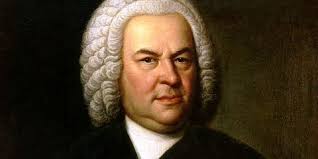The Mass in B Minor (BWV 232) stands as one of the greatest achievements in Western classical music. Composed by Johann Sebastian Bach during the final decades of his life, this monumental work represents both a synthesis of his musical mastery and a profound expression of his deep faith. Despite its immense significance today, the Mass in B Minor was neither performed in its entirety during Bach’s lifetime nor originally intended as a unified composition. Its history is as fascinating as the music itself.
A Patchwork of Genius
Unlike many of Bach’s other sacred works, the Mass in B Minor was not written all at once. In fact, it evolved over a span of more than 25 years. Bach began the work in 1733, when he composed a Missa section (comprising the Kyrie and Gloria) as part of an effort to impress the new Elector of Saxony, Friedrich August II. This Missa was sent to the court in Dresden along with a dedication letter, in the hope that Bach would be granted the honorary title of court composer — which he eventually received.
In the years that followed, Bach gradually assembled additional movements of the Mass, drawing from earlier compositions and reworking them into new forms. Many scholars believe that Bach saw the compilation of the full Mass as a kind of magnum opus — a summation of his life’s work and mastery of sacred music in the Latin tradition.
A Monument of Sacred Music
By 1748–1749, Bach had completed the full Mass, encompassing the traditional sections of the Catholic Mass Ordinary: Kyrie, Gloria, Credo, Sanctus, Benedictus, Agnus Dei, and Dona nobis pacem. The final result is a monumental work lasting nearly two hours, rich in stylistic diversity and emotional depth.
What makes the B Minor Mass so remarkable is Bach’s ability to blend older contrapuntal techniques with more modern, expressive styles. He borrowed and revised several earlier cantata movements to fit the Mass text, a process known as parody. Despite this eclectic construction, the resulting work is strikingly cohesive, a testament to Bach’s genius.
Not Performed in His Lifetime
One of the most surprising facts about the Mass in B Minor is that it was never performed in its entirety during Bach’s lifetime. The Catholic liturgical text, written in Latin, was not compatible with the predominantly Lutheran liturgical practices in Leipzig, where Bach spent the last 27 years of his life. Moreover, the scale of the work would have made it difficult to perform under typical church service conditions of the time.
It wasn’t until the 19th century — nearly 100 years after Bach’s death — that the Mass in B Minor began to receive the recognition it deserved. The first documented complete performance took place in 1859, thanks in part to the growing appreciation of Bach’s work during the Romantic era.
Legacy and Influence
Today, the Mass in B Minor is widely regarded as one of the greatest compositions in the history of Western music. Its combination of spiritual depth, structural grandeur, and technical brilliance continues to inspire musicians, scholars, and audiences alike.
For many, the Mass in B Minor represents the pinnacle of Bach’s sacred music, and even of the entire Baroque era. It is frequently performed and recorded, studied in music conservatories, and revered as a sublime expression of the human spirit reaching toward the divine.
Conclusion
Johann Sebastian Bach’s Mass in B Minor is more than just a musical composition — it is a spiritual and artistic landmark. Created over many years and never heard in full during the composer’s lifetime, it now stands as an enduring masterpiece. Through its timeless beauty and profound complexity, it continues to speak to generations of listeners, affirming Bach’s place as one of the greatest composers in history.


No responses yet